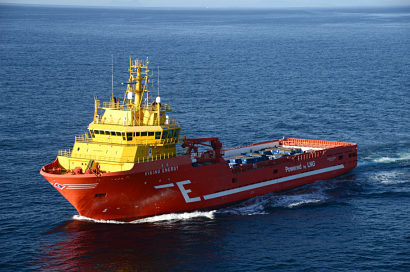
Interest in ammonia-powered fuel cells for the maritime sector is growing, but stakeholders have, as yet, been hesitant to commit to investments in large-scale systems. Following the installation of an ammonia fuel cell on Viking Energy, the project, owned and operated by Eidesvik and on contract to energy major Equinor, will ramp up to qualifying 20 MW fuel cell solutions for ocean going vessels.
“The ultimate goal of the project is to demonstrate the feasibility of ammonia fuel cells for ocean going vessels and long sea voyages” said Dr Michail Cheliotis, Research Associate at the University of Strathclyde, lead partner in the project. “Once the first phase of the project is completed, that’s when the fun starts. The huge difference in scope makes ShipFC much more interesting than just a replication of Viking Energy. The similarities basically end with ammonia, because a 20 MW power plant requires significantly different treatment.”
Cheliotis says that scaling up the project is well within reach, given the prior knowledge of both fuel cells and ammonia as an energy carrier.
The project will consider three replicator vessel types, including a bulk vessel, an offshore construction vessel, and a container ship. The work will involve close cooperation with replicator vessel owners and a thorough examination of vessel requirements. Technical and economic knowledge developed in the Viking Energy pilot will be incorporated in a broader analysis of ammonia in the maritime sector and comparison with other alternative fuels.
“Ammonia presents certain technical challenges, but even though it is corrosive, the safety trade-off between ammonia and hydrogen favors ammonia” added Cheliotis. “It is less explosive, requires less complex storage and transport solutions, and it is a well-known commodity from industry. Based on this experience, the necessary safeguards can be built in. We have seen that liquid ammonia is similar to liquefied gas in the handling process. Industry has a high level of maturity and an excellent track record in handling LNG and LPG, and this experience is proof that it can be done safely. We will be looking at the entire life cycle of ammonia, from production to transport and bunkering. One of the ShipFC partners is a major supplier of ammonia, and we will be working together with them to address these issues.”
Ammonia for fuel cells can be produced with a green profile giving ammonia a positive overall environmental footprint. The efficiency of ammonia in fuel cells is good and fuel cells have favourable characteristics in the configuration of vessels as well.
For additional information:

